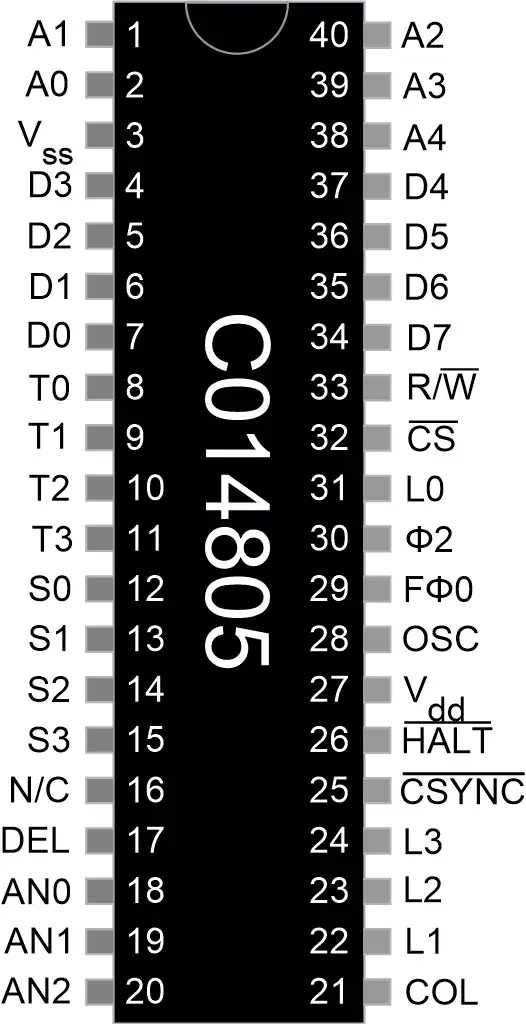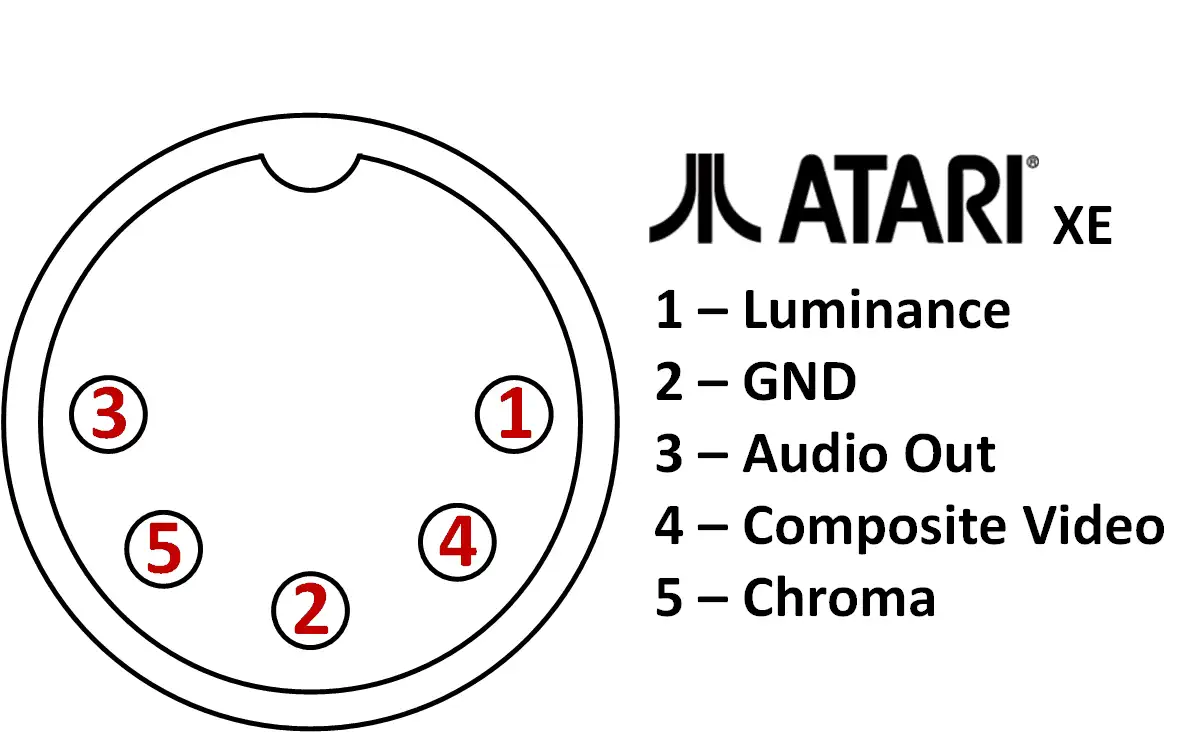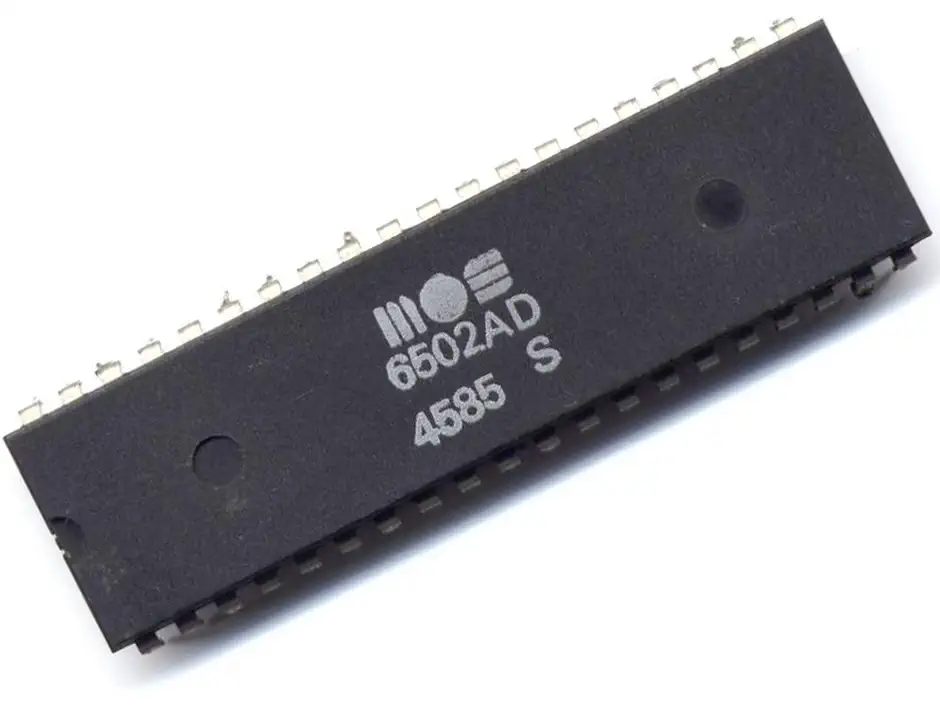Introduction
The Atari 130XE and it's smaller RAM sibling, the Atari 65XE where the final 8-bit machines that Jack Tramiel's Atari Corporation released.
The XE line (XE stood for XL Expanded) was announced in 1985, the same year as the new Atari ST line of 16 bit computers were announced. The Atari130XE was functionally the equivalent of the Atari 800 XL but in a new case that was in line with the new Atari ST computers. The machine had 128kByte of memory, that was available through bank switching. This was the only 8-bit machine that Atari released with more than 64kByte of RAM.
Just like it's smaller sibling, the 130XE lacked the PBI connection of the 800 XL. Instead of the PBI (Parallel Bus Interface) the XE computers had the Enhanced Cartridge Interface, ECI. It was electronically equivalent to the PBI but it lacked some signals that caused incompatibility in a few peripheral devices. The 400/800 style cartridge connector was still there.
Atari 8-bit Architecture
The Atari machines consist of a 6502 as the main processor, a combination of ANTIC and GTIA chips to provide graphics, and the POKEY chip to handle sound and serial input/output. These support chips are controlled via a series of registers that can be user-controlled via memory load/store instructions running on the 6502. For example, the GTIA uses a series of registers to select colors for the screen; these colors can be changed by inserting the correct values into its registers, which are mapped into the address space that is visible to the 6502. Some of the coprocessors use data stored in RAM, notably ANTIC's display buffer and Display List, as well as GTIA's Player/Missile (sprite) information.
The custom hardware features enable the computers to perform many functions directly in hardware, such as smooth background scrolling, that would need to be done in software in most other computers. Graphics and sound demos were part of Atari's earliest developer information and used as marketing materials with computers running in-store demos.
The Antic Display Processor
ANTIC is a microprocessor which processes a sequence of instructions known as a display list. An instruction adds one row of the specified graphics mode to the display. Each mode varies based on whether it represents text or a bitmap, the resolution and number of colors, and its vertical height in scan lines. An instruction also indicates if it contains an interrupt, if fine scrolling is enabled, and optionally where to fetch the display data from memory.
Since each row can be specified individually, the programmer can create displays containing different text or bitmapped graphics modes on one screen, where the data can be fetched from arbitrary, non-sequential memory addresses.
ANTIC reads this display list and the display data using DMA (Direct Memory Access), then translates the result into a pixel data stream representing the playfield text and graphics. This stream then passes to GTIA which applies the playfield colors and incorporates Player/Missile graphics (sprites) for final output to a TV or composite monitor. Once the display list is set-up, the display is generated without any CPU intervention.
There are 15 character and bitmap modes. In low-resolution modes, 2 or 4 colors per display line can be set. In high-resolution mode, one color can be set per line, but the luminance values of the foreground and background can be adjusted. High resolution bitmap mode (320x192 graphics) produces NTSC artifacts which are "tinted" depending on the color values; it was normally impossible to get color with this mode on PAL machines.
For text modes, the character set data is pointed to by a register. It defaults to an address in ROM, but if pointed to RAM then a programmer can create custom characters. Depending on the text mode, this data can be on any 1K or 512 byte boundary. Additional register controls allow flipping all characters upside down and toggling inverse video.
CTIA and GTIA chips
The Color Television Interface Adaptor (CTIA) is the graphics chip originally used in the Atari 400 and 800. It is the successor to the TIA chip of the 1977 Atari VCS. According to Joe Decuir, George McLeod designed the CTIA in 1977. It was replaced with the Graphic Television Interface Adaptor (GTIA) in later revisions of the 400 and 800 and all later 8-bit models. GTIA, also designed by McLeod, adds three new playfield graphics modes to ANTIC which allow more colors than previously available.
The CTIA/GTIA receives Playfield graphics information from ANTIC and applies colors to the pixels from a 128 or 256 color palette depending on the color interpretation mode in effect. CTIA/GTIA also controls Player/Missile Graphics (sprites) including collision detection between players, missiles, and the playfield; display priority for objects; and color/luminance control of all displayed objects. CTIA/GTIA outputs separate digital luminance and chroma signals, which are mixed to form an analog composite video signal.
CTIA/GTIA also reads the joystick triggers and the console keys Option, Select, Start, and operating the keyboard speaker in the Atari 400/800. In later computer models the audio output for the keyboard speaker is mixed with the audio out for transmission to the TV/video monitor.

The Pokey peripheral chip
The third custom support chip, named POKEY, is responsible for reading the keyboard, generating sound and serial communications (in conjunction with the PIA chip (Peripheral Interface Adapter, 6520) commands and IRQs, plus controlling the 4 joystick movements on 400/800 and later RAM banks and/or ROM(OS/BASIC/Self-test) enables for XL/XE lines). It also provides timers, a random number generator (for generating acoustic noise as well as random numbers), and maskable interrupts. POKEY has four semi-independent audio channels, each with its own frequency, noise and volume control. Each 8-bit channel has its own audio control register which select the noise content and volume. For higher sound frequency resolution (quality), two of the audio channels can be combined for more accurate sound (frequency can be defined with 16-bit value instead of usual 8-bit). The name POKEY comes from the words "POtentiometer" and "KEYboard", which are two of the I/O devices that POKEY interfaces with (the potentiometer is the mechanism used by the paddle). The POKEY chipâ€â€as well as its dual- and quad-core versionsâ€â€was used in many Atari coin-op arcade machines of the 1980s, including Centipede and Millipede, Missile Command, Asteroids Deluxe, Major Havoc, and Return of the Jedi.

The Freddy Memory Address Multiplexer
The FREDDY chip is a 40-pin large scale integrated (LSI) circuit that was found in later model 8-bit Atari computers. It is an address multiplexer used for fast DRAM access and replaces several other chips cutting cost and increasing CPU and ANTIC memory access speeds.
FREDDY Allows the CPU and ANTIC chips to access the DRAM memory independent of each other. The chip was originally designed for the Atari 1400XL and the Atari 1450XLD systems. These systems were never released an FREDDY was then used for the 800XL and the later XE systems.
FREDDY was combined with the C061618MMU in the XL/XE line of Atari's and with the C025953 EMMU for the Atari 130XE computer, due to it's larger memory of 128KByte.


Atari 130XE A/V Connector
Notable difference with the A/V connector of the 600XL is the Luminance and Chroma signal

MOS 6502 CPU
The 6502 is an 8-bit MicroProcessor designed by MOS Technology. The team was led by Chuck Peddle and had also worked on the Motorola 6800. The 6502 is a simplified, but faster and cheaper design than the 6800.
The 6502 was introduced in 1975 and was the cheapest microprocessor on the market. Together with the Zilog Z80, the 6502 helped start the home computer revolution of the 1980s. The 6502 was used in a wide range of devices: the Atari 2600, the 8-bit Atari home computers, the Apple II, the Nintendo Entertainment System, the Commodore 64, the BBC Micro and many others. All used the 6502 or a variation of it.
The 6502 is a 1MHz design, while the 6502A is designed for 2MHz. The 6502A is 100% compatible with the original 6502.
Commodore soon bought MOS Technology, but conitnued to sell the microprocessor to competitors and licensed the design to other manufacturers.
Source: WikiPedia - MOS Technology 6502
320x192 graphics
16 colors, 16 intensities Best Text 40x24 Best Color 16 colors, 16 intensities Best Graphics 320x192 in 16 colors, 16 intensities Sprites Atari Player Missile Graphics (PMG) System OS Atari BASIC Storage Rom Cartridges, SIO Bus for external Tape or Disk Drive


